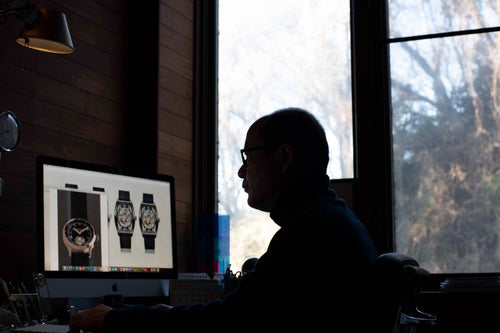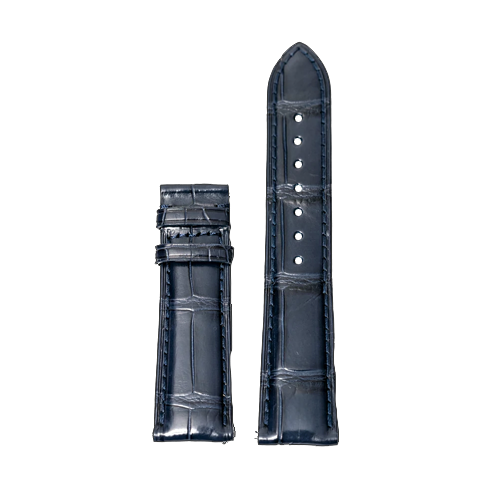Made in Japanの心に触れる旅~第4回 「福寿」(神戸 酒心館) Journey to touch the heart of “Made in Japan”-FUKUJU”-KOBE SHUSINKAN
兵庫県、灘五郷(なだごごう)の酒処、御影郷の蔵元・福寿(ふくじゅ)を訪問しました。

酒銘の「福寿」は、福の神である七福神の「福禄寿」が由来。幸福と長寿。
“Fukuju” comes from “Fukurokuju”, the Seven Lucky Gods, which are the gods of good fortune. happiness and longevity.

宝暦元年の1751年創業。阪神淡路大震災では、蔵が倒壊し、酒作りも危ぶまれた状況から努力と情熱をもって再開。
The brewery was Founded in 1751, the first year of Horeki in Edo era. During the Great Hanshin-Awaji Earthquake, the brewery was destroyed and sake production was in jeopardy, but the brewery was restarted by their effort with passion.
 ZT004-01 RBL
ZT004-01 RBL
日本は古来米を中心とした農耕文化が色濃く残っています。米から酒が造られ、神に供えることで豊かな収穫や無病息災を祈り、そのお酒を飲むことで厄を払う。お酒は神と人とを結びつける役割を担う、神聖なものでした。
お酒が嗜好品として、武士や町民の間で日常的に楽しまれるようになったのは、江戸時代です。
日本全国では、千を超える酒蔵がありますが、なんと江戸時代から続く酒蔵が今も多く残っています。
兵庫県の灘、京都府の伏水(江戸時代は伏見でなく伏水と表記)、広島県の西条は、日本三大酒処として知られています。
京都には、大手メーカー『月桂冠』や『黄桜』兵庫には『菊正宗』、『白鶴』、『大関』などが有名です。蔵の数が一番多いのが新潟で89蔵。比較的小規模な蔵が多いです。
灘五郷(なだごごう)とは、神戸市・西宮市の沿岸部に栄えた日本酒の生産が盛んな5つの地区を言います。西宮郷、御影郷などがあります。
江戸時代後期の1853年頃には江戸で飲まれる日本酒の8割を灘の酒造が供給していたといわれています。
宝暦元年(1751 年)に創業した御影郷の福寿は、比較的小規模の蔵で、手造りにこだわる酒蔵として十三代にわたり「福寿」 の名を守り続けてきました。
灘五郷が酒どころとして栄えた理由は、以下の3つにあると言われています。
1. 自然が生んだ豊かな気候と土地、及びミネラル豊富な「宮水」
2. 上質な酒米「山田錦」
3. 海上輸送の重要拠点として「神戸港」が江戸時代から発展
<1.宮水を生かす酒造り>
日本酒の原材料は、「米」、「米麹(こうじ)」、「水」というシンプルな原料です。
この中で、一番多く使われているのは、「水」。日本酒は、その約8割が水でできているのです。
日本酒作りでは、お酒の原料として使われている以外にも洗米や割水など沢山の水が使われ、必要な水の総重量は、なんと米の総重量の50倍と言われています。福寿では、水道水よりはるかに品質基準の高い六甲山系の宮水を使っての酒造りを行っています。
実は、水の違いによって、日本酒の味わいが違ってくるのです。
六甲山系の宮水は、カルシウムやマグネシウムなどのミネラル分が豊富な硬度100以上の硬水。味の悪くなる鉄分も少ないお酒造りに適した水です。
硬水を使ったお酒は、ミネラルが酒米を発酵させるための酵母や麹の栄養分となり、発酵が早く進む為、荒削りですが、キレがあり、しっかりと存在感のある濃厚で辛口なお酒に仕上がる傾向があり、別名「灘の男酒」と言われています。
それに対して、硬度の低い軟水に近い水を使う京都・伏水のお酒は、柔らかい口当たりのお酒になるので、「京都の女酒」と呼ばれています。
日本の水は、軟水が多いので、水のような口当たりのお酒はたいてい軟水を使っているものが多いです。灘の存在感のあるお酒は、宮水(硬水)が大きな役割を果たしています。
酒の仕込み水は、一般的な水道水より、透明度の高いより良い品質の水が必要とされます。
それでは、何故、六甲の水は、澄んだ透明の水なのでしょうか?
それには、地形に秘密があります。実は、六甲山脈は、険しい山の為、川が急流で砂が溜まりにくいので、透明度が高いという性質があるのです。
灘の酒に使われる宮水は、山間部の花崗岩砂礫層(かこうがん・されきそう)などの水が浸み込みやすい地中を流れている地下水(伏流水:ふくりゅうすい)で、砂や岩の間を通ることによって自然に濾過(ろか)される為、川などの地上水より不純物が少なく透明度の高い水になるのです。
宮水の発見をしたのは、灘五郷の蔵のひとつ、櫻正宗の蔵元6代目山邑(やまむら)太左衛門でした。
二箇所の酒造で常に品質が 西宮蔵が勝ることを発見し、試行錯誤の末、西宮に湧き出る井水「宮水」が高い品質のお酒を生み出すことを見つけたのです。
福寿では、更に宮水の硬さを和らげる為、濾過した純水(ピュアウォーター)とブレンドしてお酒の仕込み水としています。ブレンドの配分は、企業秘密ということでした。
<2.酒米の王様~山田錦>
酒米は、日本酒をおいしく造るために品種改良を重ねられた特別な米です。兵庫県は、日本酒造りに最適と呼ばれる「酒米の王様」山田錦(やまだにしき)の産地でもあります。
山田錦は、背丈が高く、普通の食米が120cmだとすると150cmもあり、台風などで倒れやすく、病気にも弱い非常に手間のかかる貴重な酒米です。
香り高く、ふくらみのある味わいのお酒に仕上がるので、近年、鑑評会の金賞は、軒並み山田錦。比較的成長の遅い「晩稲(おくて)」の為、温暖な気候の西日本で作られることが多いです。
新潟で多く生産される酒米の「五百万石」は、早く成長する「早生(わせ)」の為、寒冷地に適した酒米で、端麗辛口な新潟のお酒を象徴しています。
日本酒造りは、米を削って精米する、いわゆる「米を磨く」ことから始まります。多くの場合、食用米ではなく、酒造り専用の「酒米」を使います。磨く理由は、米の外側にタンパク質由来の雑味があるので、それを削って取り、雑味のないお酒を造る為です。
 精米 Rice polishing (福寿資料館より)
精米 Rice polishing (福寿資料館より)
酒米(酒造好適米)は、食用米と比べるとタンパク質の含有量が低く、粘り気が少ないお米です。
食米と違うのは、白い不透明な米の中心部(心白)が大きいので、吸水性に優れ、やわらかく麹菌の菌糸が入りやすい隙間があるので、麹が育ちやすく発酵に適しています。また、食用米よりも米を磨く(精米)ときに割れにくいという性質もあります。
精米歩合とは、精米して残った米の割合を%で表したものです。70%が一般的で、純米酒(醸造アルコールを入れないお米だけで作ったお酒)の中でも、精米歩合60%以下の米を用いて低温で長期間発酵させる「吟醸造り(ぎんじょうづくり)」によって製造されている日本酒があり、精米歩合60%以下のものは「純米吟醸酒」、50%以下のものは「純米大吟醸酒」と呼ばれます。 吟醸造りによって、吟醸香と呼ばれるフルーティで華やかな香りが生まれます。
近年、日本酒ブームを牽引した獺祭(だっさい)(山口県・旭酒造)は、精米歩合35%以下(65%以上酒米を磨く)の日本酒も香り高いお酒として人気です。
 |
 |
| 山田錦の玄米 |
精米50%に磨いた山田錦(福寿資料館より) |
酒造りの工程は、精米後にぬかを取る作業の洗米(せんまい)を経て、水に漬けて(浸漬)から蒸米(むしまい)の状態にしてから麹(こうじ)を加えます。
お米から作る日本酒は、ワインのブドウのように元々糖分が無いので、そのままでは、アルコール発酵ができません。「お米のデンプンを麹の力で糖化」して、その「糖分にアルコール発酵を促す酵母」を加えます。麹と水を混ぜ合わせたものに乳酸菌を加えて更に蒸米を加えて2週間から1か月で酒の原料となる「酒母(しゅぼ)」が完成。

福寿の仕込み・発酵タンク室 Fermentation room

櫂入れの作業風景(福寿)Mixing ingredients and Control of Fermentation by stirring.
酒母や醪(もろみ)水・麹・蒸米をかきまぜることで発酵作用の調整をしています。
このように日本酒は、「デンプンの糖化とアルコール発酵を同時発酵させる」複雑な醸造なのです。(ビールの場合は、麦芽の糖化とアルコール発酵を2段階に分けます)
「酒母」をタンクに入れ、麹、蒸米、水を加えて3週間から1か月発酵させ「もろみ」をつくり、それを搾り(上槽)、酒と酒粕に分離します。その後、濾過をして、熱処理(火入れ)してから清酒となり、その後、瓶詰となります。
醪(もろみ)をこさずに作るお酒が「どぶろく」粗ごしするのが「にごり酒」です。
灘五郷は、2018年に国税庁官が定めた酒類の地理的表示(GI=Geographical Indication)の指定を受けました。ワインでいうところのボルドーやシャンパーニュなどの特定の地域が生産の呼称に使われている原産地呼称統制(AOC、ACなど)と似たものと言えます。
GI指定は、「まさしくその産地で生産されたこと」と「その原産地固有の特徴と優れた品質基準を満たしていること」を示しています。
「GI灘五郷」と称された清酒は、「味わいの要素の調和がとれ、後味のキレの良い酒質」という特性があることが保証されており、2021年1月時点では11社44銘柄の灘五郷の日本酒が「GI灘五郷」として認定されています。
福寿の超特選 純米酒が、「大関」、「白鶴」、「菊正宗」のような大メーカーと並んで認定銘柄に選ばれているのは快挙です。

福寿 純米吟醸 は、ノーベル賞の晩餐会で振舞われる日本酒。
福寿は、スウェーデンに輸出をしたご縁から「ノーベル賞の晩餐会公式の日本酒」
となりました。世界に認められたMade in Japan のお酒です。
Fukuju Junmai Ginjo(FUKUJU Blue Label) is a sake served at the Nobel Prize banquet.
Fukuju is the official sake of the Nobel Prize Banquet thanks to its exporter of Sweden.
This is a Made in Japan sake that is recognized around the world.
<3. 海上輸送の重要拠点として発展した灘、神戸港>
六甲山系の水は、腐敗を招きづらい強い水として、江戸時代から有名でした。かつて外国船の船乗りも“赤道を超えても腐らない澄んだ透明の強い水 “Kobe Water”を神戸港で積んだという話があります。
神戸港が外国の大型船を停泊できる深度の深い良港(水深マイナス16M)になったのも、川が急流で砂が溜まりにくいことからなのです。
日本海の米や物資を樽廻船で運ぶ北前船の西回り航路では、海の穏やかな瀬戸内海を通って、神戸港で灘の酒を積み、大坂(上方)や江戸へ下っていきました。神戸港は、海上輸送の重要拠点として江戸時代から発展したのです。
くだらない(つまらないもの)の語源は、良質な米や酒と違い、江戸や大坂に船で下らずにその土地で消費される比較的品質の低いものを指したことが由来です。
<福寿が目指す酒造り>
日本酒の酒造りを蔵人(くろうど)と言いますが、そのすべてを統括するコンサートの指揮者のような存在でしょうか。杜氏(とうじ)。ある意味、蔵元の当主と同じくらい責任の重い仕事で、ドイツのマイスターと呼ばれる職人の様に尊敬されています。
日本では、まだまだ職人の社会的な地位は高くない部分もありますが、日本酒の杜氏さんに限っては、お酒の神様のように尊敬され、メディアの取材では、必ずと言っていいほど昔ながらの杜氏さんが出てきます。
実は、福寿では、熟練の職人技の杜氏さんではなく、若い社員の方を杜氏として登用して酒造りをされているようです。
 福寿の若き蔵人 young sake brewery worker at Fukuju
福寿の若き蔵人 young sake brewery worker at Fukuju
また、SDGsの流れもあって、福寿では、カーボンゼロのお酒を造っています。
加えて、地球温暖化で気温が高くなっていることに耐性のある酒米新品種「Hyogo Sake 85」を使用したお酒を海外輸出目的につくっています。

Hyogo Sake 85は、兵庫県で、30年以上の歳月をかけて開発された次世代の酒米。心白が大きく、酒粕が少ない地球にやさしい酒米。韓国で育成された「水原258号」と兵庫県産の「山田錦」の交配種。
Hyogo Sake 85 is a next-generation’s sake rice developed over 30 years in Hyogo Prefecture. Earth-friendly sake rice with a large heart and little sake lees. A cross between “Suwon 258'' grown in Korea and ”Yamada Nishiki'' from Hyogo Prefecture.
日本全国にある日本酒の蔵元は、昔ながらの伝統製法の他、革新的なお酒造りをしている蔵元もあります。例えば、米を浸水する時間をストップウォッチで測ったり<福島県・飛露喜(ひろき)廣木酒造>、日本酒に使われる伝統的な黄麹(きこうじ)に焼酎で使われる白麹(しろこうじ)をブレンドして酸味の強い白ワインのようなテイストの日本酒を作ったり<秋田県・新政(あらまさ)新政酒造>と様々です。新政では、現在主流の温度管理が容易な琺瑯のタンクを一切使わず、伝統的な木桶のタンクを使っています。
Made in Japanの形も伝統と革新をうまく織り込んだ色々な進化形があるのだなと思う
灘五郷の旅でした。
We visited a sake brewery in “Nadagogo”(five-districts of Sake brewery), Hyogo Prefecture, and a brewery called Fukuju in “Mikagego”(Mikage-district of Sake brewery).
Japan has had a strong agricultural culture centered around rice since ancient times. Sake is made from rice and is offered to the gods to pray for a good harvest and good health, and drinking the alcohol to ward off evil spirits. Alcohol was a sacred thing that played a role in connecting people with God. It was during the Edo period that alcohol became a luxury item enjoyed on a daily basis by samurai and townspeople.
There are more than 1,000 sake breweries across Japan, and many of them have been around since the Edo period and still remain today.
Nada in Hyogo Prefecture, Fushimi in Kyoto Prefecture, and Saijo in Hiroshima Prefecture are known as Japan's three major sake breweries area.
In Kyoto, major manufacturers such as ”Gekkeikan” and ”Kizakura'' are famous, while in Hyogo, ”Kiku Masamune'', “Hakutsuru'', and ”Ozeki'' are famous. Niigata has the largest number of breweries, with 89. Many of the breweries are relatively small.
Nada Gogo refers to the five districts that flourished along the coast of Kobe and Nishinomiya cities where sake production was flourishing. These include Nishinomiya-go and Mikage-go.
It is said that in the late Edo period, around 1853, Sake made from Nada-Sake breweries supplied 80% of the Sake consumed in Edo(old city name of Tokyo in Edo period).
Founded in 1751, Fukuju in Mikagego is a relatively small brewery that has maintained the name “Fukuju”' which is named after “Fukurokuju”, the Seven Lucky Gods, which are the gods of good fortune. happiness and longevity. 13 generations as a sake brewery that is particular about hand-made sake.
It is said that there are three reasons why Nada Gogo flourished as a sake production area.
1. “Miyamizu” has a naturally rich climate and land, and is rich in minerals.
2. High-quality sake rice “Yamada Nishiki”
3. "Kobe Port" has developed as an important base for maritime transportation since the Edo period.
<Water in Rokko>
The raw materials for sake are simple: rice, rice malt, and water.
Of these, the most commonly used is water. Approximately 80% of Japanese sake is made from water.
At Fukuju, they brew sake using Miyami water from the Rokko Mountains, which has a much higher quality standard than tap water.
In fact, the taste of sake differs depending on the water used.
The Miyamizu water from the Rokko Mountains has a hardness of over 100 and is rich in minerals such as calcium and magnesium. This water is suitable for sake brewing as it has low iron content which can cause bad taste.
At Fukuju, to further soften the hardness of Miyamizu, they blend it with filtered pure water to make our sake. The proportion of the blend was a trade secret.
<King of Sake rice-Yamada-Nishiki>
Sake rice is a special type of rice that has been repeatedly bred to produce delicious sake. Hyogo Prefecture is also the production area of Yamada Nishiki, the “king of sake rice'' that is said to be perfect for making sake.
Yamada Nishiki is tall, measuring 150 cm compared to the 120 cm of regular rice, making it a precious sake rice that requires a lot of manual labor and is easily destroyed by typhoons and vulnerable to disease.
In recent years, Yamada Nishiki has been awarded the Gold Award at Sake tasting contest across the board, as it produces sake with a rich aroma and full-bodied taste. Because it is a relatively slow-growing “late rice,'' it is often grown in western Japan, which has a warm climate.
Sake brewing begins with polishing the rice." In many cases, “sake rice'' specifically for sake brewing is used instead of edible rice. The reason for polishing is that there is a bad taste derived from protein on the outside of the rice, so this is removed to create sake without that taste.
Rice polishing ratio is the percentage of rice remaining after milling, expressed as a percentage. 70% is common, and among Junmaishu (alcohol made only from rice without brewing alcohol), “Ginjozukuri'' is made by fermenting rice at low temperature for a long period of time using rice with a polishing ratio of 60% or less. )", and those with a rice polishing ratio of 60% or less are called "Junmai Ginjo", and those with a polishing ratio of 50% or less are called "Junmai Daiginjo". Ginjo brewing produces a fruity and gorgeous aroma called ginjokou.
The sake brewing process involves washing the rice (senmai) to remove the bran after polishing, then soaking it in water (soaking) and steaming it before adding koji (malt).
Sake made from rice does not have sugar in it, like wine grapes, so it cannot undergo alcoholic fermentation as is. “Rice starch” is saccharified using the power of koji'' and “yeast that promotes alcohol fermentation'' is added to the sugar. By mixing koji and water, adding “shubo”(raw material of sake) and lactic acid bacteria, and then adding steamed rice, the shubo is completed in two weeks to a month.
The fermentation process is adjusted by stirring the mash, mash water, koji, and steamed rice.
In this way, sake is a complex brewing process that involves simultaneous fermentation of starch saccharification and alcohol fermentation. (For beer, malt saccharification and alcohol fermentation are divided into two stages.)
The “sake mash'” is placed in a tank, koji, steamed rice, and water are added and fermented for three weeks to a month to create a “moromi'', which is squeezed (in the upper tank) and separated into sake and sake lees. After that, it is filtered and heat treated (pasteurized) to produce sake, which is then bottled.
In 2018, Nadagogo was designated as a Geographical Indication (GI) for alcoholic beverages by the Commissioner of the National Tax Agency. This is the same as the control appellation of origin (AOC, AC, etc.) in wine, where specific regions such as Bordeaux and Champagne are used to name production.
The sake called “GI Nada Gogo'' is ”quality sake with a harmonious balance of flavor elements and a sharp aftertaste.''
<Kobe Port developed as an important base for maritime transportation>
The water of the Rokko Mountains has been famous since the Edo period as a strong water that is resistant to spoilage. There is a story that sailors on foreign ships once loaded Kobe Water, “Kobe Water,'' a strong, clear water that would not rot even after crossing the equator.
The reason why Kobe Port is such a deep port (water depth minus 16 meters) that can accommodate large foreign ships is because the river is rapid and sand does not accumulate easily.
The westward route of “the Kitamae-sailing ship”, which transported rice and other supplies from the Sea of Japan on barrel ships, passed through the calm Seto Inland Sea, loaded up on sake from Nada at Kobe Port, and headed down to Osaka (Kamigata) and Edo. Kobe Port has developed since the Edo period as an important base for maritime transportation.
<Fukuju's future of sake brewing>
The people who make sake are called “Kuroudo”, and among them, master of Kurodo is called “Toji”. They are like the conductors of a concert who oversee everything. Toji. In a sense, it is a job that carries as much responsibility as the head of the brewery, and is respected like a craftsman called a German beer Meister.
In Japan, the social status of craftsmen is still not high in some areas, but sake brewers are revered like gods of sake, and in media interviews, they almost always say that they are The Toji (Sake Meister) will appear.
In fact, it seems that Fukuju is brewing sake by appointing “young employees” as toji rather than highly skilled long career toji.
Also, in line with the SDGs, Fukuju produces carbon-free alcohol.
Additionally, they are producing alcoholic beverages for export overseas using a new variety of sake rice called Hyogo Sake 85, which is resistant to higher temperatures due to global warming.
There are sake breweries across Japan that use traditional methods as well as those that use innovative methods. For example, they used a stopwatch to measure the time the rice was soaked in water <Hiroki, Fukushima Prefecture> There are various types of sake, such as blending white yeast which is used for Shocyu (Japanese liquor distilled from potatoes )a nd traditional yellow one for Sake to create sake with a taste similar to acidic white wine (Aramasa, Akita Prefecture). Aramasa brewery is stick to brew traditional wooden tank for brewery, not using
Modern Steel tank with enamel coating which is easy to control temperature.
We think that Made in Japan has various forms of evolution that skillfully incorporate tradition and innovation.
 |
|
株式会社 神戸酒心館(酒銘:福寿) |
 |
| SHIHO 時計店 〒650-0022 神戸市中央区元町通2丁目7-6 TEL 078-335-0550 E-mail info@shiho-watch.com 営業時間 11:00~19:00 定休日 水曜日 HP: https://shiho-watch.com/ SHIHO TOKEI TEN 2-7-6 Motomachi-tori, Kobe-city, Hyogo TEL +81-78-335-0550 E-mail info@shiho-watch.com Opening hours 11:00~19:00 Regular holiday: Wednesday HP: https://shiho-watch.com/ |













![[NEW] ZEROO M5-01 THE KIRCH MECHANICAL AUTOMATIC](http://zerootime.com/cdn/shop/files/ZM005-01SSV_{width}x.png?v=1753693052)










